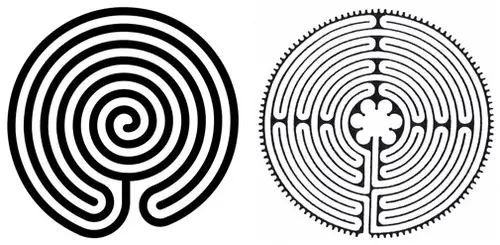By Julian Websdale
Guest Writer for Wake Up World
In early childhood, if something authentic within us (eg. an essential quality or our true-Self) is not acknowledged and mirrored back to us by our parents, we presume it is unimportant so we repress it and develop ego structures that will help us cope without it.
Psycho-spiritual development is about reversing that process – removing the blockages, bringing things into the light and turning the repression into expression. Self-realisation only becomes possible when sufficient psychological “undoing” has been completed – when our conditioning has been neutralised and our awareness has been purified (ie. dis-identified from exiles and ego structures).
Even though Self-realisation is an instant event, there are several stages leading up to it that can be used to gauge our progress and guide us onto the next stage of our journey:
[pro_ad_display_adzone id=”110028″]
Stage 1 involves consciously noticing our thoughts, emotions and body sensations.
Stage 2 involves realising that these thoughts, emotions and sensations are not us.
Stage 3 involves realising that we are the awareness that is noticing these things.
Stage 4 involves developing a felt sense that we are this awareness.
Stage 5 involves experientially knowing and feeling that we are pure awareness.
Stage 6 involves experientially knowing and feeling that Awareness (God/Life/Universe) is being us.
The Labyrinth of our Inner Journey
Most of us are suffering from mistaken identity – taking ourselves to be someone we are not. The goal of psycho-spiritual development is to correct this mistaken identity; not to strengthen or improve our false identity. The self that we think we are does not exist; it is a figment of our imagination. The self that we think we are cannot awaken – we have to awaken from that false-self in order to realise our true-Self. When this occurs, we realise that we have always been our true-Self.
Our inner journey takes us through the labyrinth of our ego structures to discover our true-Self (at the core of our being). A labyrinth differs from a maze in that it only has one path which leads to the centre, so the path is already mapped out for us – all we have to do is walk it. If we stop resisting and controlling, the flow of life will naturally carry us to our destination. Some parts of the journey will be tough and others will be wonderful, but they will all be experiential opportunities for the reintegration, development and liberation of our consciousness.

Figure 1 – The Labyrinth: Symbolic Depictions of the Ego Super-Structure
The most effective way of journeying through the labyrinth of our ego structures is to do so with conscious awareness and presence, because then we can process the psychological material (i.e. dissolve the ego structures and reintegrate our consciousness) as we encounter it. Then, when we finally reach the core of our being and realise our true-Self, we can be confident that we will not relapse back into ego-identification because the ego will have largely been dissolved.
Temporary self-realisation is the result of jumping to the core of our being (e.g. through intense will) without dissolving the ego structures. If this occurs, it is only a matter of time before the lure of the ego pulls us back out again, because too many ego structures remain for the Self-realisation to be permanent.
Our conditioning can cause us to remain misidentified with the ego-self longer than necessary. So here are a few simple things that we can do to loosen our identification with our ego-self:
• Don’t take things personally: Let go of any definitions or concepts of yourself as a personal “I” and see yourself as impersonal pure awareness.
• Forgive everyone and everything: You can’t change what has happened so why hold onto the personal feeling of victimhood?
• Be selfless: Put other people’s needs ahead of your own and dedicate part of your life to serving or helping others.
• Be authentic at all times: Don’t put on a different persona for different occasions.
• Have fewer preferences and opinions; especially about things that don’t really matter.
Non-Duality
Self-realisation results in non-dualistic perception – a direct and intimate unity with everything we encounter. But what does it really mean and how does it work?
Dualistic Perception: The true-Self has forgotten who it really is and believes it is the false-self (a conceptual self-image). So the false-self stands between the true-Self and objective reality (as depicted in Figure 2). The false-self perceives the object, and the true-Self believes it is the false-self perceiving the object, so there is no direct perception. There is separation between the true-Self and the object – hence duality. Note: The false-self doesn’t actually do any perceiving (because it is just a thought-form); it is more like a lens that the image passes through (and often gets distorted by) on its way to being perceived by the true-Self.

Figure 2 – Dualistic Perception
Non-Dualistic Perception: With the false-self no longer present, the true-Self can perceive the object directly (as depicted in Figure 3). There is nothing between the true-Self and the object, so the true-Self can intimately merge with the object to directly perceive every attribute – hence unity (or non-duality).

Figure 3 – Non-Dualistic Perception
Source:
http://esotericscience.org/articlei.htm [June 2013]
Previous articles by Julian:
- The Crown Empire and The City Of London Corporation
- The Esoteric Symbolism of The Cross
- The Mystical Path: Experiencing the Quiet Fruition of Reality
- Pyramid Power: Harnessing the Energetic Fields of Pyramids
- How to Induce Lucid Dreaming
- Expanding Our Awareness
- Sacred Sites and Energy Fields
- The Real Background to Syria and the Arab Spring
About the author:
Julian Websdale is an independent researcher in the fields of esoterica, metaphysics, and mysticism. His interest in these subjects began in 1988, at the age of seven. Julian was born in England and received his education as an engineer from the University of Bolton. Julian served in a Vaishnava monastery, and has traveled to over 14 countries since 2012. His work creates enthusiastic responses from inquiring minds across the world.
Follow Julian on Facebook and Twitter, or visit his blog.
[pro_ad_display_adzone id=”110027″]







